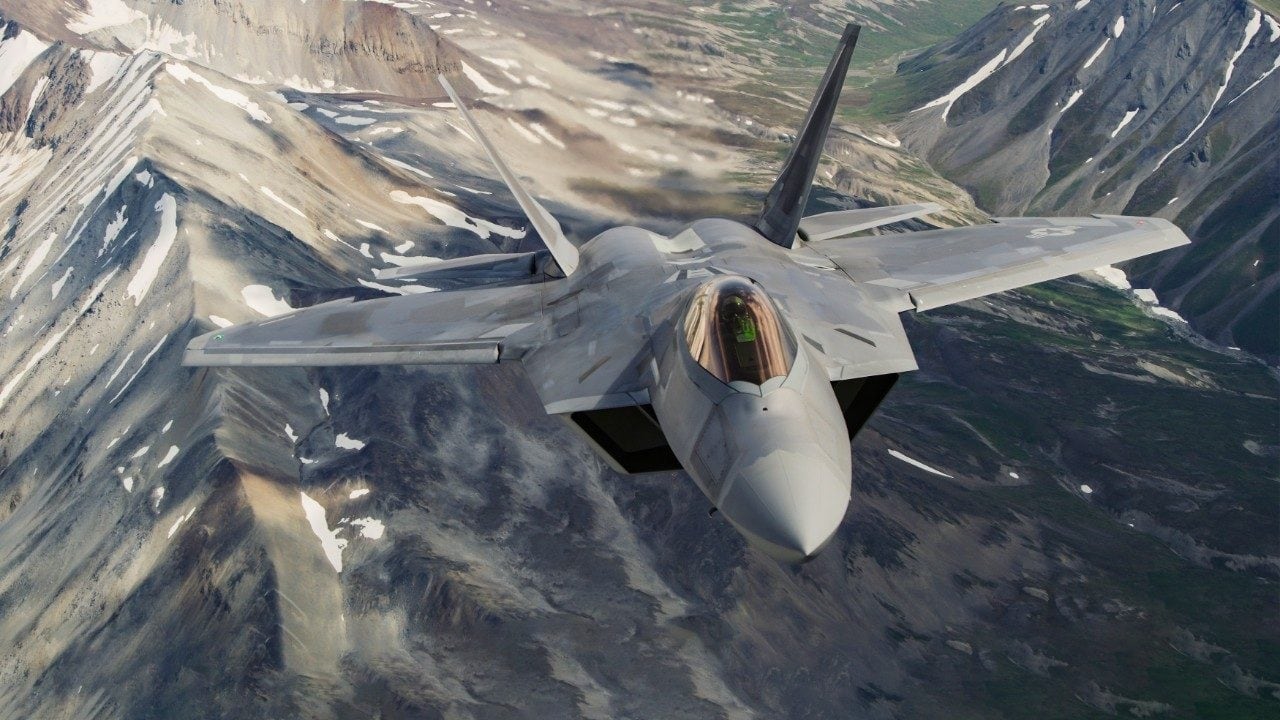How the US Military Dominates from Above, a History: The United States of America has led the world in military aviation since the very inception of the concept. And with advanced new fighter and bomber platforms under development in programs like the Next Generation Air Dominance (NGAD) and the B-21 Raider, America appears to be extending its technological lead in the airpower realm, incorporating a wide variety of new technologies into the next generation of tactical jets.
Military aviation, like aviation as a whole, has always been a matter of compounding technologies from all around the world. In many ways, America’s frequent breakthroughs in the realm of airpower can be credited to the nation’s adoption and understanding of that concept—embracing good ideas regardless of where they come from, even if those ideas have yet to be embraced by the nation they were born in. America’s early stealth efforts, for instance, were built upon academic assertions made by a Soviet physicist named Pyotr Ufimtsev as early as 1962.
So, while this is a list of notable American firsts, we should always remember that military technology is never developed in a vacuum. Every new defense program is informed by the efforts that came before it and the current state of oppositional powers, making technological advancement something of an ongoing conversation.
1908: The US Army purchases the world’s first military aircraft
Orville and Wilbur Wright began experimenting with the science of flight in 1899, taking to the sky for the first time just four years later with their revolutionary Wright Flyer. Six years after that historic flight, the United States introduced the world to the concept of military aviation with the purchase of the first Wright Military Flyer.
This bi-plane was used to train the first military aviators, setting records for long-duration flight even during its qualifications for the sale. The Army’s requirements included the ability to transport a pilot and passenger for an hour at an average speed of 40 miles per hour. It achieved nearly 43 miles per hour and flew for just longer than an hour and twelve minutes. Including a bonus for exceeding requirements, the aircraft cost the United States Army a paltry $30,000. Not a bad investment, considering airpower would become intrinsic to America’s approach to warfare in the decades to come.
1912: The US Army conducts the first “gun runs” with an armed aircraft
Not long after the U.S. Army Signal Corps began flying the world’s first military aircraft, a man by the name of Col. Isaac N. Lewis approached the Signal Corps school’s commander, Capt. Charles deForest Chandler, with an interesting proposition. Lewis had designed his own “automatic rifle,” or a machine gun in modern parlance, and he wanted to see if it could be used from an aircraft. Chandler, as you might expect, was more than happy to oblige.
Within literally minutes, the two men strapped the 25-pound weapon onto the right footrest of one of the Army’s Wright Type B aircraft and before long, Chandler was making firing passes at a 6-foot by 7-foot cheesecloth target from about 250 feet up at speeds of around 48 miles per hour. Chandler completed three firing passes, hitting the target with five rounds.
The US defense apparatus benefits from having large oceans to the East and West, preventing European or Asian ground wars from reaching American soil. But these bodies of water pose a significant challenge for power projection. That’s why a joint effort to cross the Atlantic in the air, made by the US Navy, Coast Guard, and aviation firm Curtiss in 1919, earns a place on this list of historic firsts.
While it was not the first continuous flight across the Atlantic, the 1919 crossing took off from New York and arrived in Lisbon, Portugal some 19 days later. The crew and their Curtiss flying boat NC-4 made numerous stops along the way for fuel, repairs, and rest. Important as this event was, it was overshadowed just a few weeks later when a Brit completed the first non-stop trans-Atlantic flight, though that flight was just from St. John’s, Newfoundland to Clifden, County Galway, Ireland over the span of 72 hours.
1923: The US Army Air Corps completes the first-ever mid-air refueling
On June 27, 1923, Lt. Lowell H. Smith and Lt. John P. Richter had their sights set on breaking the standing world record for flight endurance, set the year prior by another pair of Air Corps pilots. The previous record of 35 hours, 18 minutes, and 30 seconds could have stretched on for longer if the Fokker T-2 airplane used for the flight hadn’t run out of fuel.
To get past the fuel limitation issue, Smith and Richter enlisted the help of Lt. Virgil Hine and Lt. Frank W. Seifert. Both crews took to the skies aboard their DH-4B airplanes, and as they cruised over Rockwell Field in San Diego, Hine and Seifert successfully transferred fuel to Smith and Richter’s aircraft through a hose. This flight did not break the endurance record, but the two aviators would use their mid-air refueling approach to break the record two months later in a 1,250-mile flight from the Canadian to the Mexican border that required three mid-air refuelings and spanned some 37 hours and 15 minutes.
1924: The US Army Air Corps circumnavigates the globe in bi-planes
A group of eight pilots and mechanics from the U.S. Army Air Corps became the first group to circumnavigate the globe in aircraft using four Douglas World Cruiser biplanes. The historic flight took 175 days and included more than 74 stops in 28 different countries for fuel and supplies. The four aircraft that participated in the flight were named after popular US cities: Seattle, Chicago, Boston, and New Orleans.
The trip ultimately covered some 27,550 miles, with only two of the original aircraft surviving the entirety of the journey: the Chicago, which was flown by Lt. Lowell Smith and Lt. Leslie Arnold, and the New Orleans, which was flown by Lt. Erik Nelson and Lt. John Harding Jr.
1927: Charles Lindbergh completes the first solo non-stop transatlantic flight
In 1927, American pilot Charles Lindbergh completed the first nonstop flight between New York and Paris, France in his single-engine monoplane known as the “Spirit of St. Louis.” The flight took 33 and a half hours to complete, using a custom-built aircraft that included extra fuel tanks and an elongated wingspan to support the additional weight in fuel.
Incredibly, Lindbergh completed the flight with no radio on board, no gas gauge, no night flying lights, navigation equipment or even a parachute if he needed to bail out. All of these seemingly essential pieces of gear were seen as unnecessary weight for the dangerous, record-breaking effort. Prior to crossing the Atlantic, Lindbergh would use his Spirit of St. Louis to also set a record for the fastest transcontinental flight, flying between San Diego and New York.
1942: The US fields the worlds’ first bomber with a pressurized cabin in the B-29 Superfortress
When discussing the huge expenditures of World War II, the Manhattan Project (the effort to develop the first atomic bombs) usually gets top billing thanks to the $1.9 billion the US spent on the endeavor. Most people don’t realize, however, that the Manhattan Project was actually the second most expensive defense program of the era, ranking well behind the $3 billion effort to field the B-29 Superfortress.
The B-29 was built under a shroud of secrecy, often by laborers who had never even seen an airplane before, but it came with a number of significant technological advancements that would become standard in long-duration bombers to come. Chief among these new technologies was the B-29’s pressurized cabin. This allowed crews to fly in relative comfort at higher altitudes than open-fuselage bombers permitted, opening the door for the globe-spanning long-duration bomber operations to come.
1945: US Air Force B-29s drop the first atomic bombs ever used in combat on Hiroshima and Nagasaki, Japan
On August 6, 1945, a modified B-29 Superfortress dubbed the “Enola Gay” dropped a 9,000-pound uranium-235 atomic bomb over Hiroshima, Japan. The weapon detonated approximately 2,000 feet above the ground with a blast that was roughly 12-15 kilotons, or equivalent to about 12-15 thousand pounds of TNT. The bomb leveled five square miles of the city and ushered in a new era in military competition and technology.
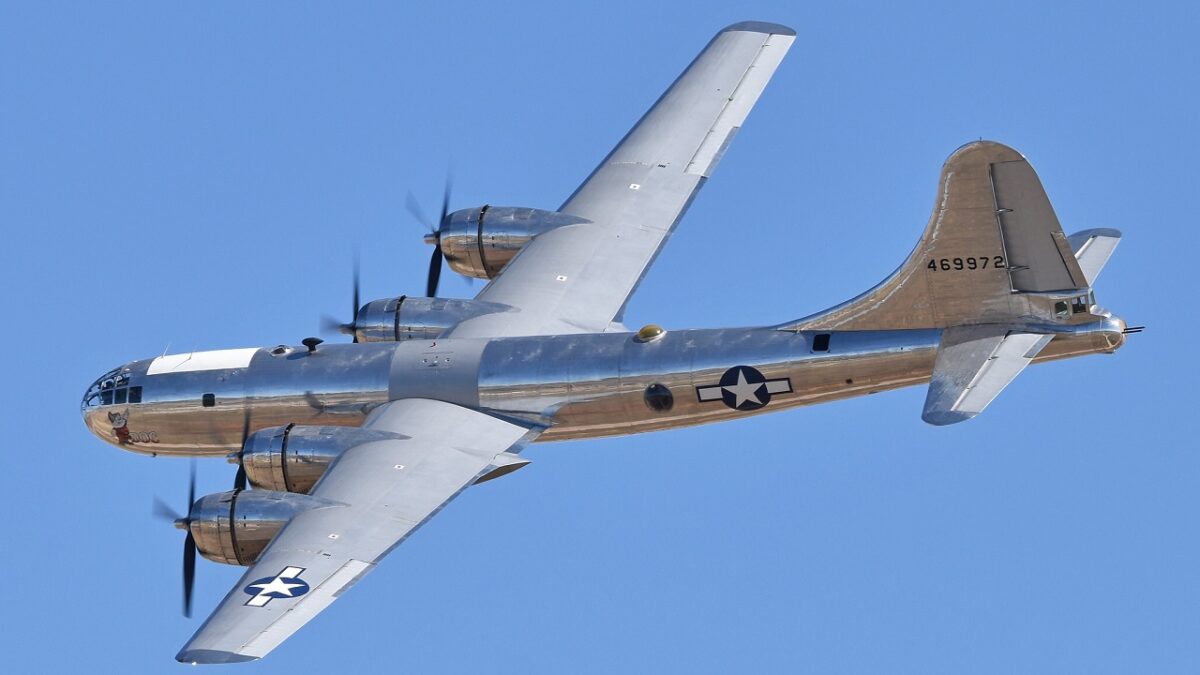
B-29 bomber. Image Credit: Creative Commons.
Three days later, another modified B-29, this one called Bockscar, dropped the second and last atomic bomb used in combat to date over the city of Nagasaki. Interestingly, Nagasaki was not the bomber’s intended target when Major Charles Sweeney, the bomber’s pilot, first took to the sky that morning. Heavy clouds over the intended target city of Kokura forced the pilot to redirect to his secondary target.
1947: US Air Force pilot Chuck Yeager breaks the sound barrier
For many years prior to 1947, there was a popular sentiment among scientists and aviators that crewed flight would never be able to break the sound barrier due to the extreme drag and changes in the physical properties of air that occur as an aircraft approaches Mach speeds. On October 14, 1947, the newly formed Air Force sent test pilot Chuck Yeager into the sky aboard his Bell X-1, dubbed the Glamorous Glennis, to prove that popular perception wrong.
Despite flying with two broken ribs, Yeager took his rocket-powered X-1 to Mach 1.05 at an altitude of 45,000 feet over the dry lake beds of the Mojave desert. However, the US government wouldn’t reveal Yaeger’s incredible feat to the world for another eight months, finally announcing mankind was capable of supersonic flight the following June.
1949: US Air Force B-50 circles the globe without landing
While the early efforts to cross oceans or circumnavigate the globe all included multiple stops for fuel, repairs, supplies, or rest, a Boeing B-50 bomber named Lucky Lady II became the first aircraft to circle the entire globe in a single flight. The 23,452-mile journey took just over 94 hours to complete at an average speed of around 249 miles per hour.
The flight was made possible thanks to in-flight refueling, which was far from commonplace at the time. The B-50, which was a modified and upgraded iteration of the World War II B-29, was refueled in flight by similar aircraft: Four pairs of KB-29s (B-29-based tankers) that were positioned in the Azores, Saudi Arabia, the Philippines and Hawaii.
1953: The North American F-100 Super Sabre
1957: US Air Force B-52s become the first jet-powered bombers to circumnavigate the globe
The effort to fly around the globe in America’s new jet-powered bomber, the B-52 Stratofortress, was led by Major General Archie J. Old, Jr. and included five B-52B bombers out of the 93rd Bombardment Wing of the 15th Air Force. The mission, dubbed Operation Power Flite, was about more than setting a new aviation record, it was about ensuring America’s competitors in nations like the Soviet Union knew the U.S. Air Force had the ability to deliver atomic weapons to targets anywhere on earth.
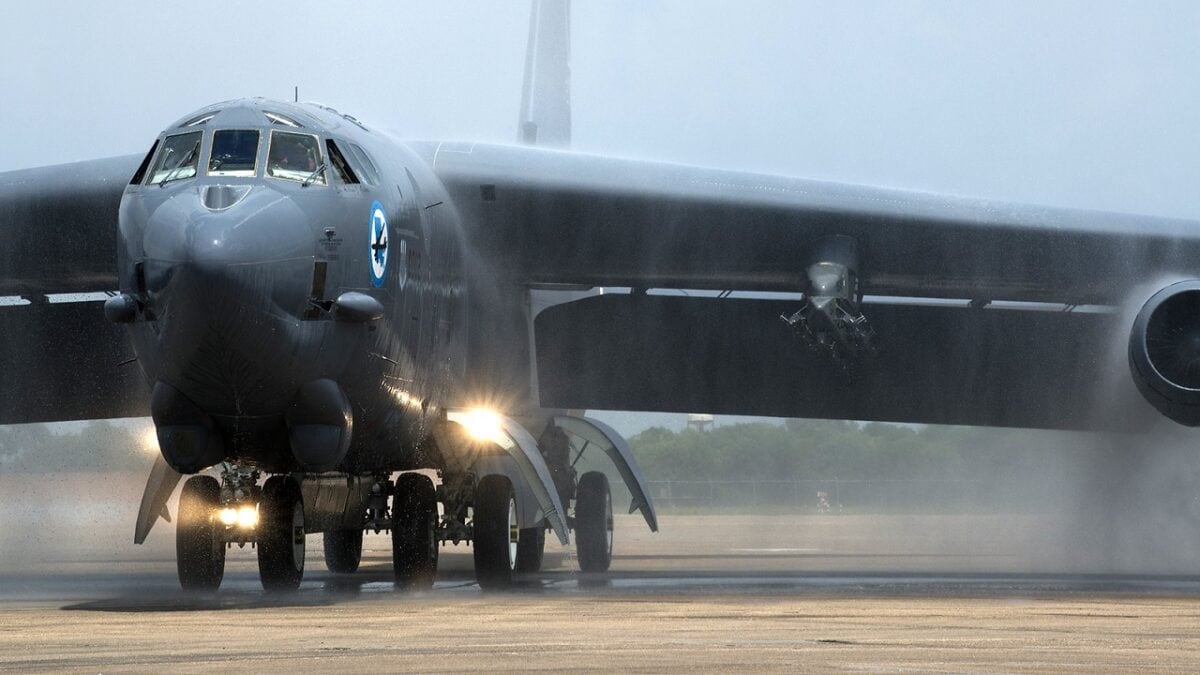
A 2nd Bomb Wing B-52H Stratofortress taxis under a spray of water after returning from a mission July 12, 2014, at Barksdale Air Force Base, La. This marked the last flight for one crew member on the aircraft, Lt. Col. Ronald Polomoscanik, the 343rd Bomb Squadron director of operations, who is retiring after 23 years of service. (U.S. Air Force photo by Master Sgt. Greg Steele/Released)
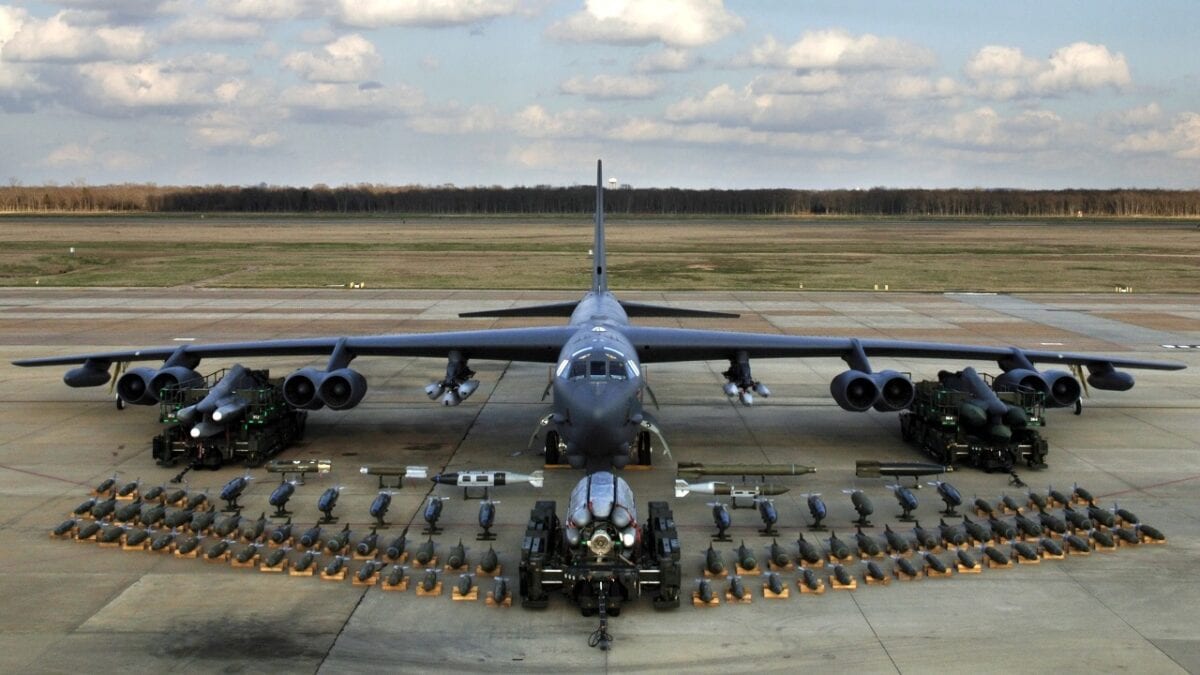
Boeing B-52H static display with weapons, Barksdale AFB 2006.
The five-bomber formation included three primary B-52s and two aircraft flying as spares. One was forced to land after failing to refuel in-flight and the second spare eventually departed the formation as intended, with three bombers ultimately completing the the24,325-mile journey in about 45 hours and 19 minutes at an average speed of 525 miles per hour.
1960: The B-58 Hustler enters service for the US Air Force as the world’s first supersonic bomber
The Convair B-58 Hustler entered service in 1960 with a single purpose: Outrun Soviet air defenses and fighters while delivering a nuclear payload to targets deep inside the USSR. To accomplish that feat, the B-58’s four General Electric J79-GE-5A afterburning turbojet engines pushed the bomber to speeds as high as Mach 2, or better than 1,500 miles per hour, and altitudes higher than 60,000 feet. The aircraft was operated by three crew members and was considered quite difficult to fly.
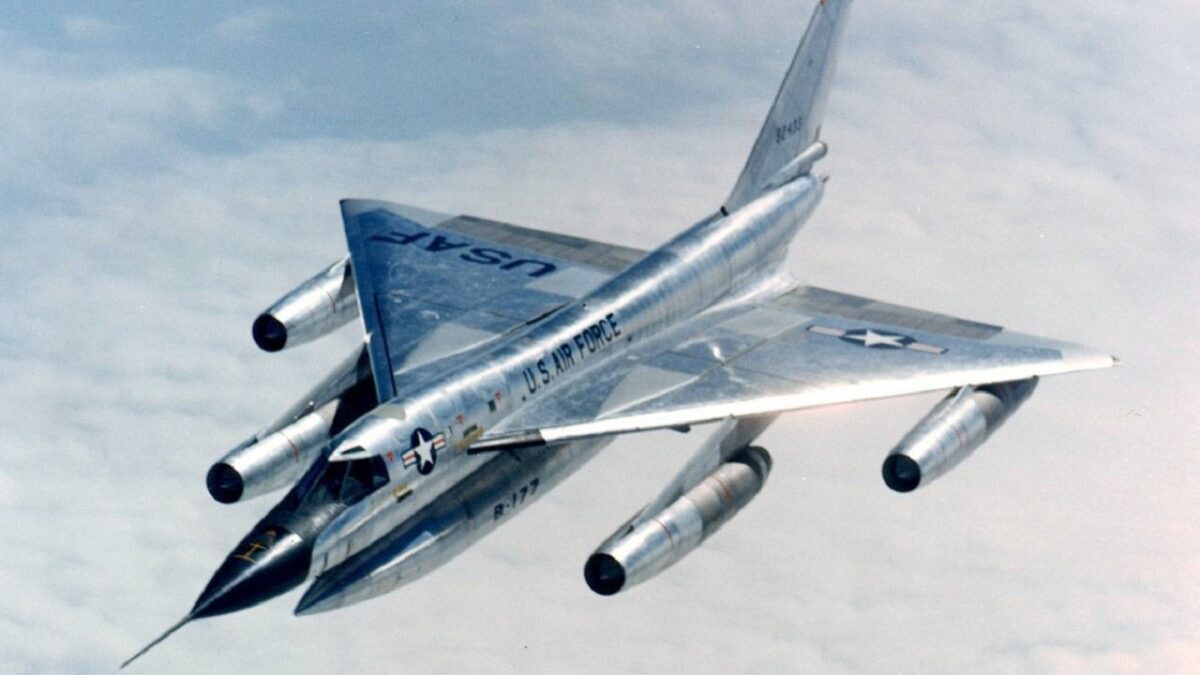
B-58 Hustler. Image Credit: US Air Force.
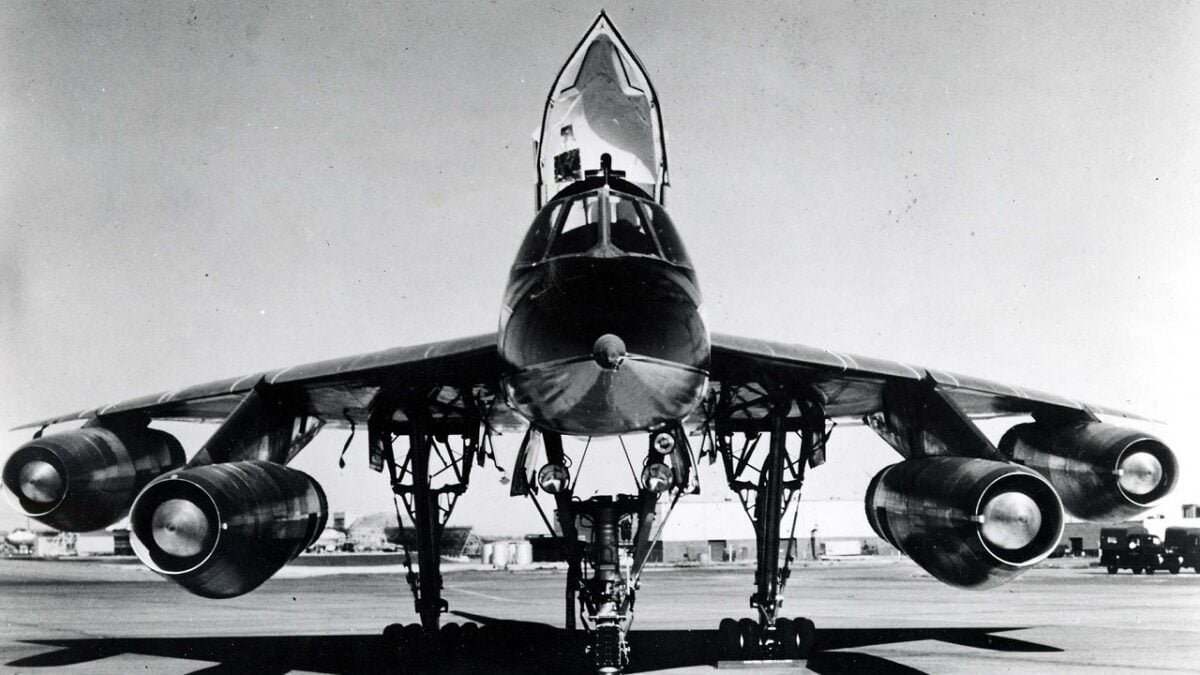
Convair B-58A Hustler front view. (U.S. Air Force photo)
The B-58 was groundbreaking, but as Soviet surface-to-air missile technology improved, the supersonic bomber was forced to shift its approach away from high-altitude flying. Instead, its focus became low-level penetration of enemy airspace, but the dense air at lower altitudes prevented it from reaching supersonic speeds and further limited its fuel range. That, combined with a problematic safety record, resulted in a service life of just ten years; though a number of B-58 pilots would be selected to fly another high-speed platform to come, the SR-71.
1964: Lockheed’s SR-71 Blackbird, the fastest operational aircraft in history, takes to the skies
The SR-71 Blackbird needs no introduction. Developed as a high-flying replacement for the U-2 Spy Plane, the SR-71 aimed to defeat enemy air defenses through a combination of achieving high altitudes and sustaining absolutely incredible speeds. Officially, the SR-71 is said to have a top speed in excess of Mach 3.2, though pilots like Brian Shul have claimed to exceed Mach 3.5 while avoiding Soviet intercepts.
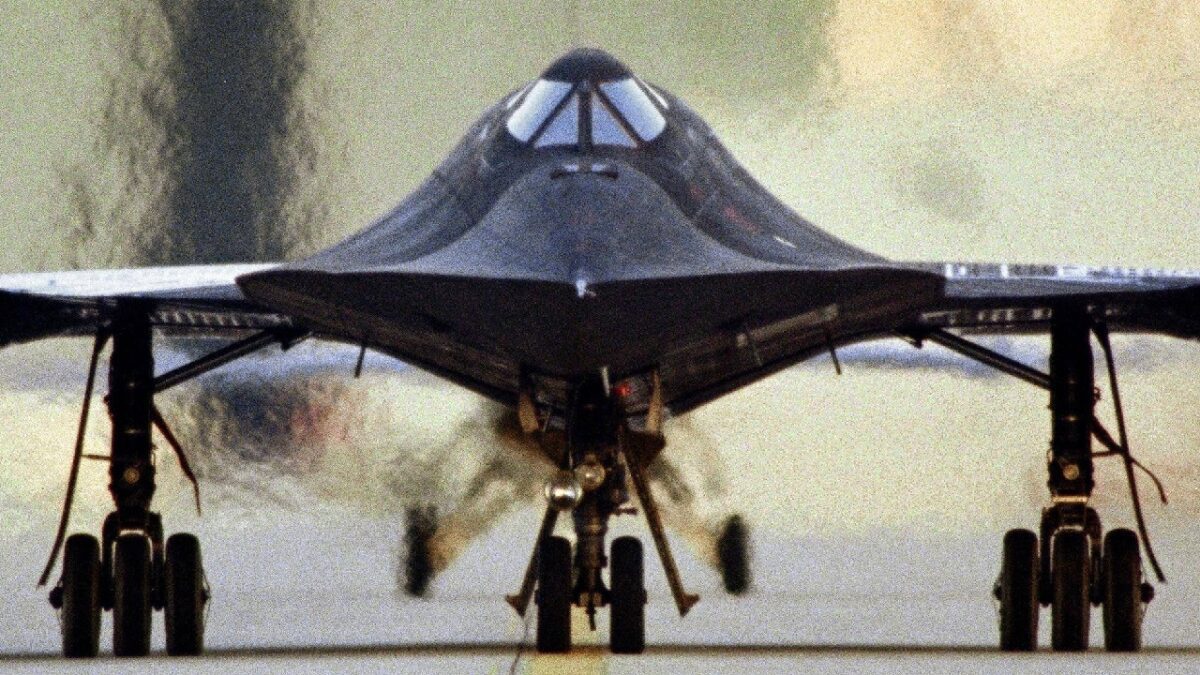
SR-71 Blackbird Spy Plane. Image Credit: Creative Commons.

Image is of an SR-71 Spy Plane. Image Credit: Creative Commons.
The SR-71 is said to have had as many as 4,000 missiles fired at it throughout its three decades of service, but each time, the pilot was able to simply lean into the throttle and leave the missiles in its dust. The SR-71 remains the fastest operational aircraft ever to fly to this very day.
1967: NASA and the US Air Force’s X-15 reaches Mach 6.7 with William “Pete” Knight onboard
In 1967, William “Pete” Knight made history at the stick of his North American X-15A-2 rocket-powered aircraft when he reached a speed of Mach 6.7, or around 5,140 miles per hour, at an altitude of some 102,000 feet. While this particular flight was one for the record books, it was no fluke. Over nine years, 12 pilots would take the stick of the X-15 for a total of 199 flights, 13 of which even met the Air Force’s criteria for spaceflight, earning eight pilots their astronaut wings.
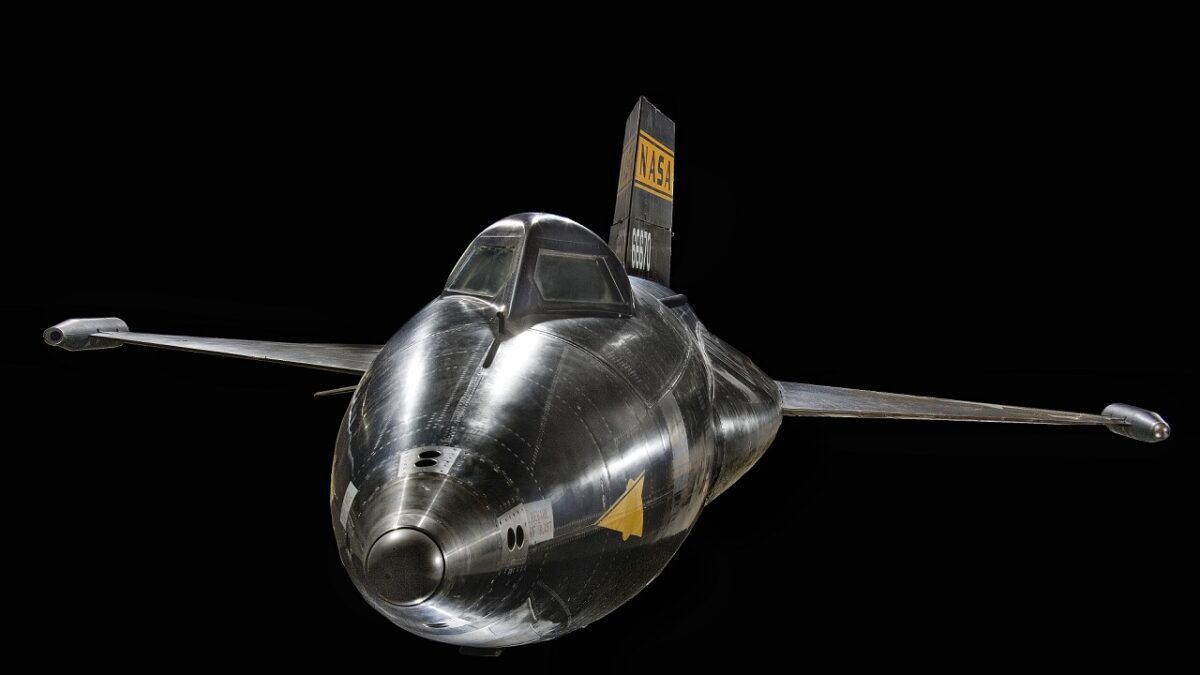
North American X-15, rocket powered experimental aircraft; black titanium skin with wedge shaped horizontal stablizer; yellow stripe NASA inisignia on tail with stars and red bars United States national insignia on wings; white letter text “U.S. AIR FORCE” on the sides of the fuselage.
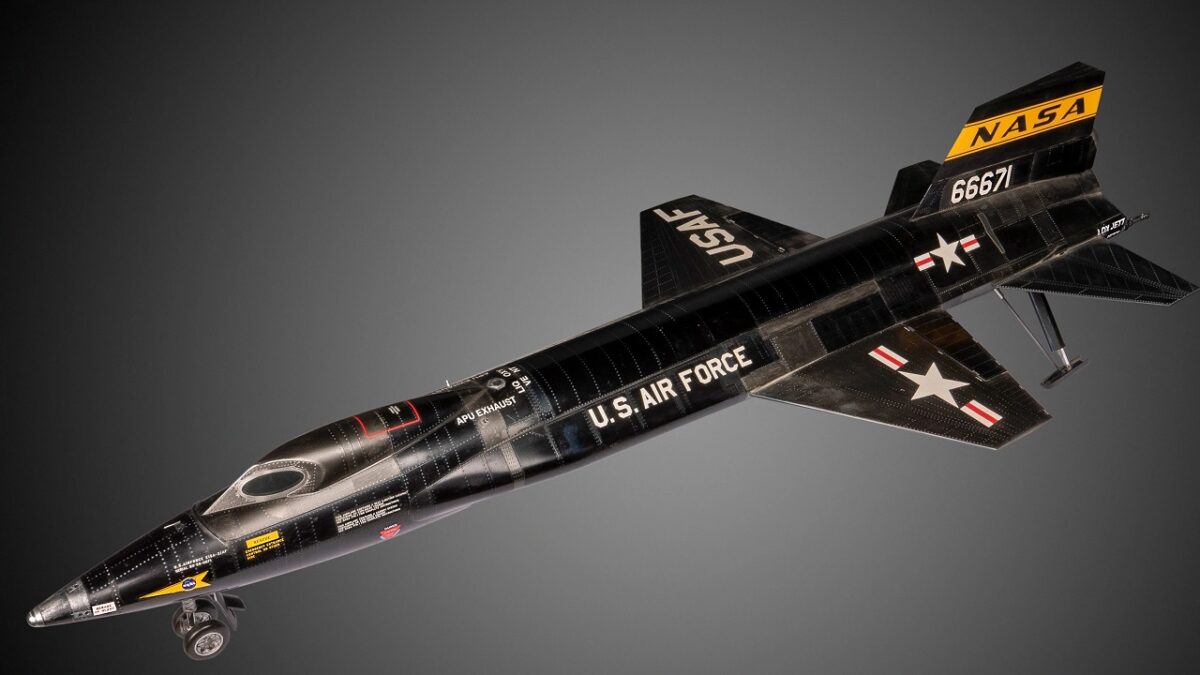
X-15 graphic artist image. Image Credit: Creative Commons.
In order to achieve such incredible speeds, the X-15 relied on a liquid-propellant rocket engine that would only burn for between 80 and 120 seconds. But in that short time, boy did it burn. The XLR99 rocket engine in the X-15 produced 600,000 horsepower and 70,400 pounds of thrust, or about 2/3 the thrust Blue Origin’s New Shepard rocket leverages to send a six-person capsule into orbit.
1977: Lockheed’s Have Blue takes flight as the world’s first fixed-wing aircraft designed specifically to defeat radar
Lockheed’s Have Blue, the precursor to the operational F-117 Nighthawk, first took to the skies on December 1, 1977. Despite leading to an aircraft commonly referred to as the “stealth fighter,” Have Blue was not a particularly nimble aircraft. Unlike all previous aircraft designs, which prioritized aerospace engineering for the sake of in-flight performance, Have Blue was designed from the ground up specifically to defeat or delay detection from radar.
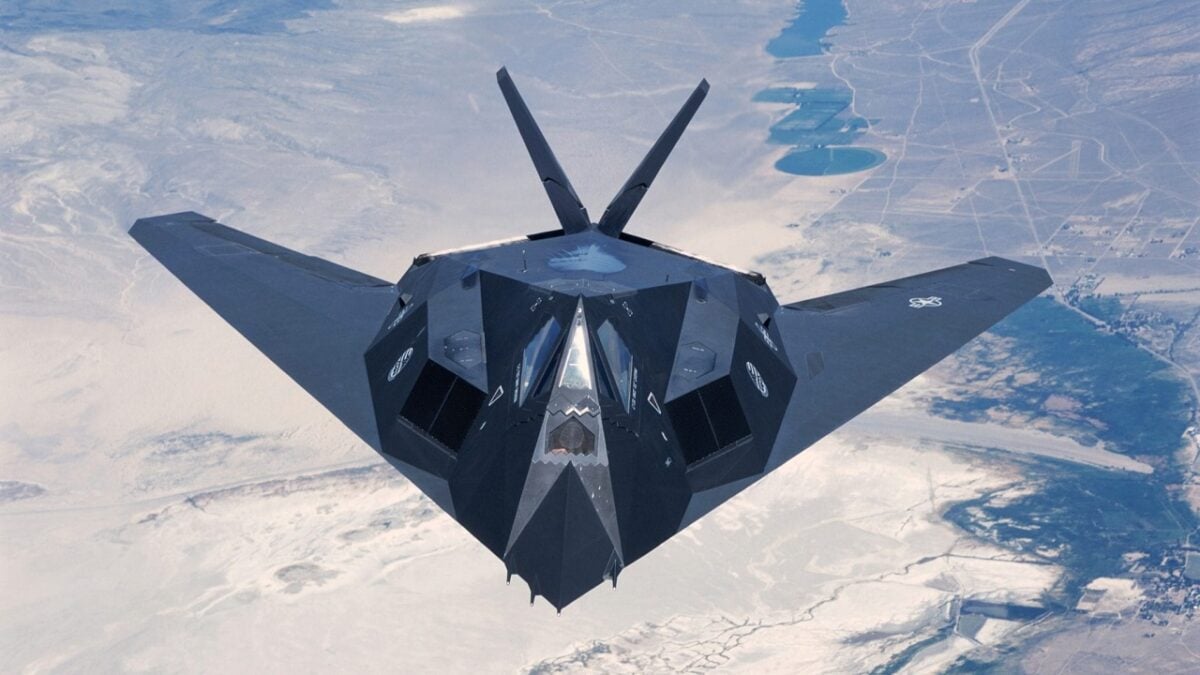
F-117 Stealth Fighter. Image Credit: Creative Commons
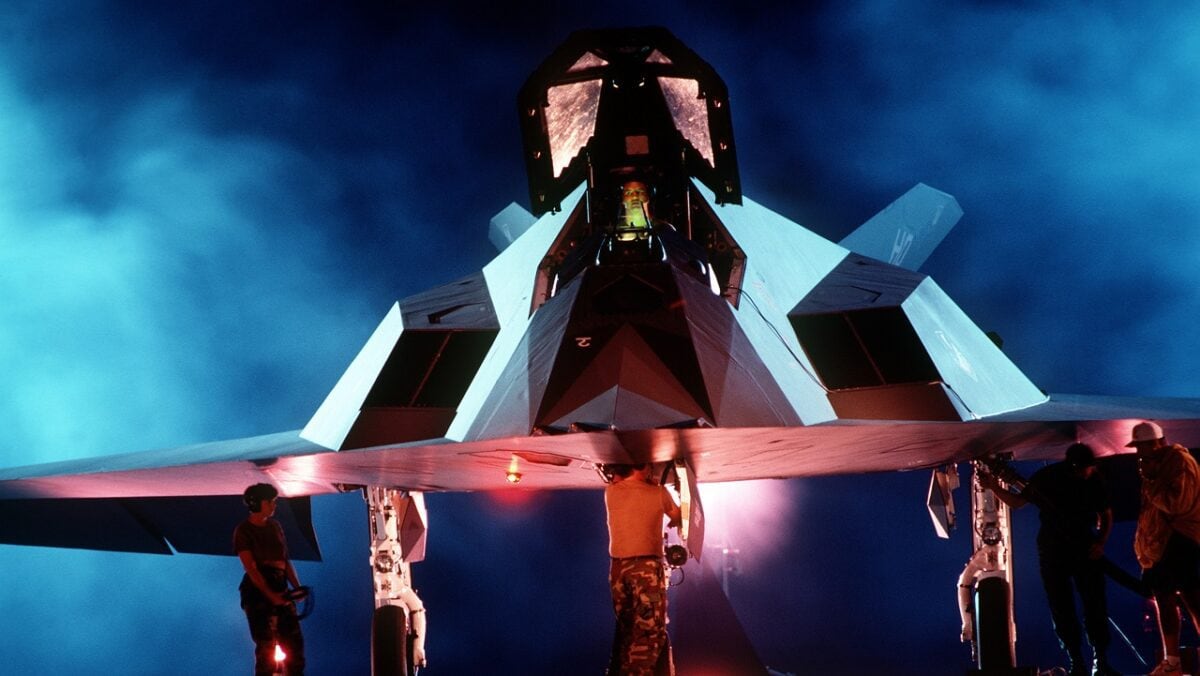
A back lit front view of a F-117A Stealth Fighter aircraft. From Airman Magazine’s February 1995 issue article “Streamlining Acquisition 101”.
Two Have Blue flight demonstrators were ultimately built, known as HB1001 and HB1002. Unfortunately, the first aircraft was destroyed after its landing gear malfunctioned and test pilot Bill Park was forced to climb and eject as its fuel ran out. HB1002 was also destroyed in another crash in 1979, during its 52nd flight.
1981: NASA’s Space Shuttle Columbia becomes the world’s first reusable space plane
On April 12, 1981, NASA’s Space Shuttle Columbia lifted off from NASA’s Kennedy Space Center in Florida. The flight was commanded by veteran astronaut John Young, with Navy test pilot Bob Crippen piloting the spacecraft. The first launch was actually supposed to take place two days earlier, but a computer glitch forced ground control to scrub the launch.
Two days later, on April 14, 1981, Columbia glided back to earth, touching down on Rogers dry lake at Edwards Air Force Base, NASA’s Armstrong Flight Research Center (known at the time as Dryden Flight Research Center), in southern California with Crippen at the stick. Columbia would return to orbit on November 12 of that same year.
1983: The world’s first operational stealth aircraft, the F-117 Nighthawk, enters service for the US Air Force
Building upon the radar-defeating experiments conducted with Have Blue, Lockheed’s legendary Skunk Works designed and built the world’s first operational stealth aircraft in the F-117 Nighthawk. Despite colloquially being known as the “stealth fighter” and even carrying the “F” prefix, the F-117 was no fighter at all. It was an attack aircraft, with no onboard radar, no guns, and no ability to carry air-to-air weapons (though some pilots have suggested that it was capable of carrying some air-to-air weapons, but never did operationally).
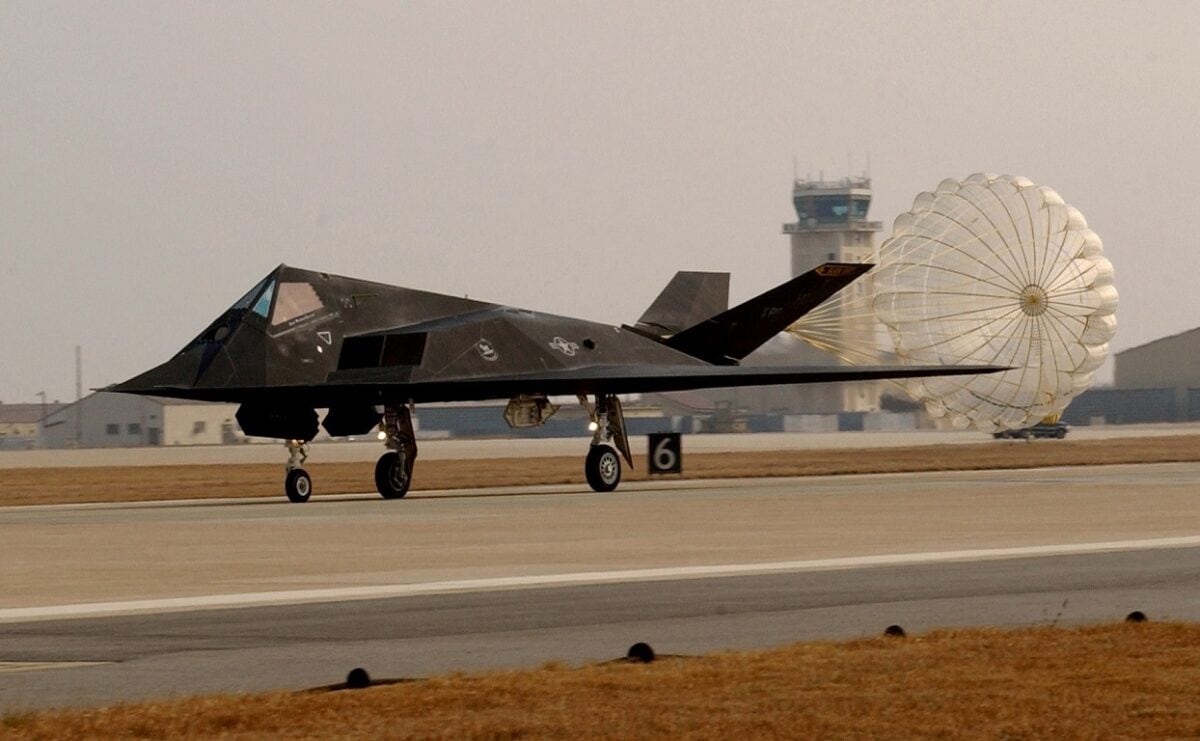
An F-117 Nighthawk taxies down the runway after landing Jan. 11 at Kunsan Air Base, Republic of Korea. A squadron of F-117s, together with 300 Airmen, have deployed here in support of a continuing force posture adjustment throughout the Pacific. The aircraft, assigned to the 9th Expeditionary Fighter Squadron, is part of the third squadron of Kunsan AB’s host unit, the 8th Fighter Wing, during the deployment’s duration. (U.S. Air Force photo/Senior Airman Darnell Cannady)
The F-117 entering service was a watershed moment in military aviation. Prior to the advent of stealth, engineers had focused primarily on making aircraft fly higher and faster to avoid being shot down by increasingly lethal surface-to-air missiles. With missiles reaching ever higher altitudes and speeds, stealth became America’s preferred method of increasing an aircraft’s survivability, paving the way for all stealth aircraft to come.
1989: The world’s first heavy payload stealth bomber takes flight
Proving that Lockheed’s Skunk Works didn’t have a monopoly on stealth technology, Northrop’s B-2 Spirit stealth bomber first took to the skies on July 17, 1989. Unlike the F-1117 Nighthawk, which was an attack aircraft with a payload limited to just two 2,000 pound bombs, the B-2 incorporated the principles of low-observability into a heavy payload bomber design capable of carrying 40,000 pounds of ordnance into the fight.
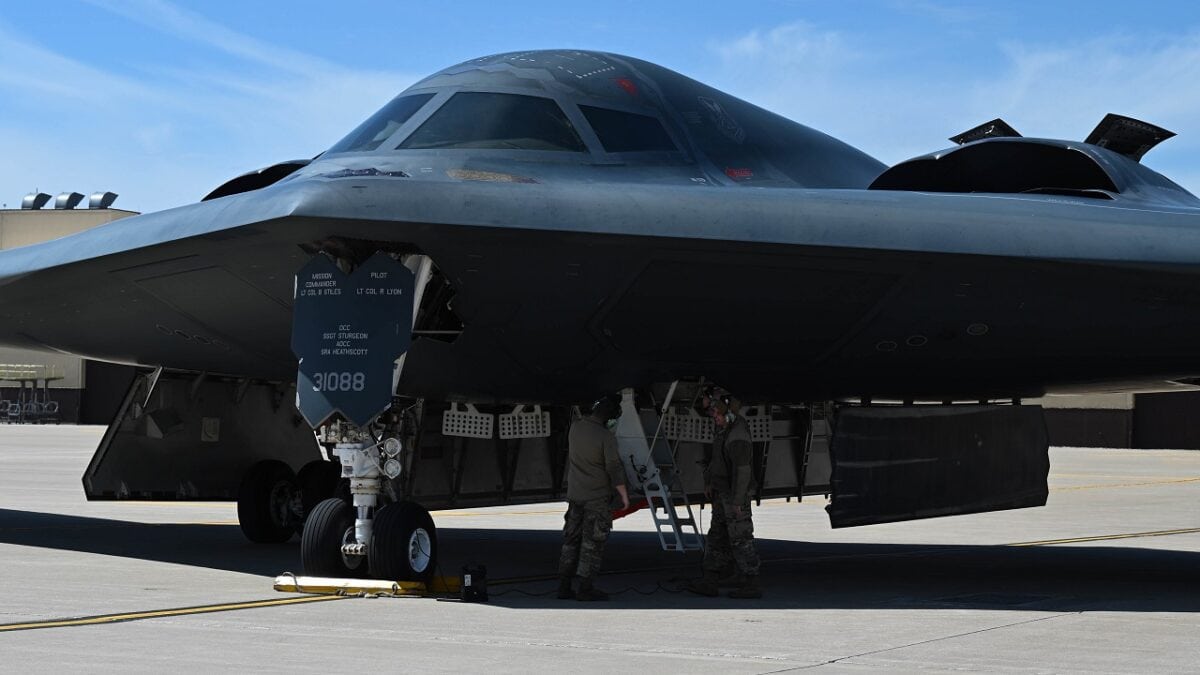
Crew chiefs assigned to the 509th Aircraft Maintenance Squadron prep a B-2 Spirit stealth bomber for a hot-pit refuel, at Whiteman Air Force Base, Missouri, April 4, 2022. Exercise Agile Tiger promotes resilience, innovation, competitiveness and process improvement, all talents required to address today’s complex challenges. (U.S Air Force Photo by Senior Airman Christina Carter)
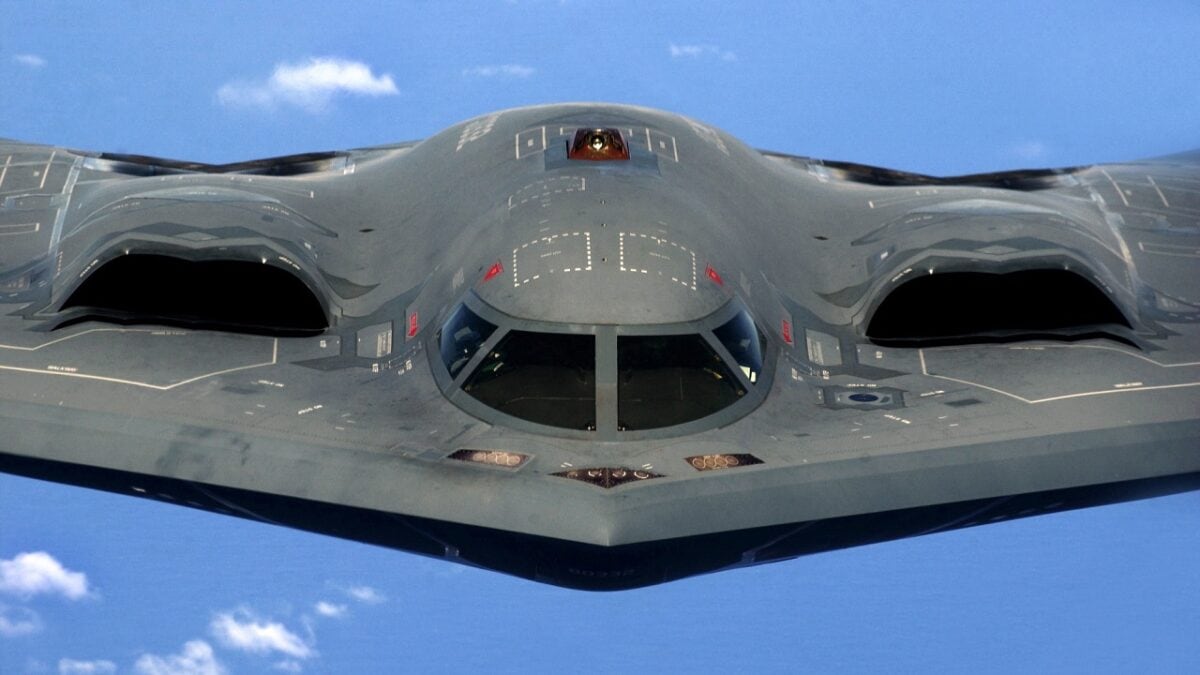
A U.S. Air Force B-2 Spirit “Stealth” bomber, 393rd Expeditionary Bomb Squadron, 509th Bomb Wing, Whiteman Air Force Base, Mo., flies over the Pacific Ocean after a recent aerial refueling mission, May 2, 2005. The Bombers are deployed to Anderson Air Force Base, Guam, as part of a rotation that has provided the U.S. Pacific Command a continous bomber presence in the Asian Pacific region since February 2004, enhancing regional security and the U.S. commitment to the Western Pacific. (U.S. Air Force photo by Tech Sgt. Cecilio Ricardo) (Released)
The B-2’s flying wing design with no vertical control surfaces makes it extremely difficult to detect on radar. In fact, the B-2 can even sneak past radar operating in lower frequencies that can often spot more modern stealth fighters like the F-22 Raptor and F-35 Joint Strike Fighter. The B-2 lineage will continue into the foreseeable future, as its successor, the Northrop Grumman B-21 Raider, is expected to enter service in the next few years.
1997: The US Air Force F-22 Raptor takes flight and becomes the world’s first 5th generation fighter
Fighter generational designations haven’t always been the sort of thing people outside the aviation industry discussed. In fact, they aren’t even formal, they really are just a sort of industry short-hand with varying definitions depending on who you ask… but one thing everyone agrees on is that when the F-22 Raptor first took to the skies, it was in a class of its own.
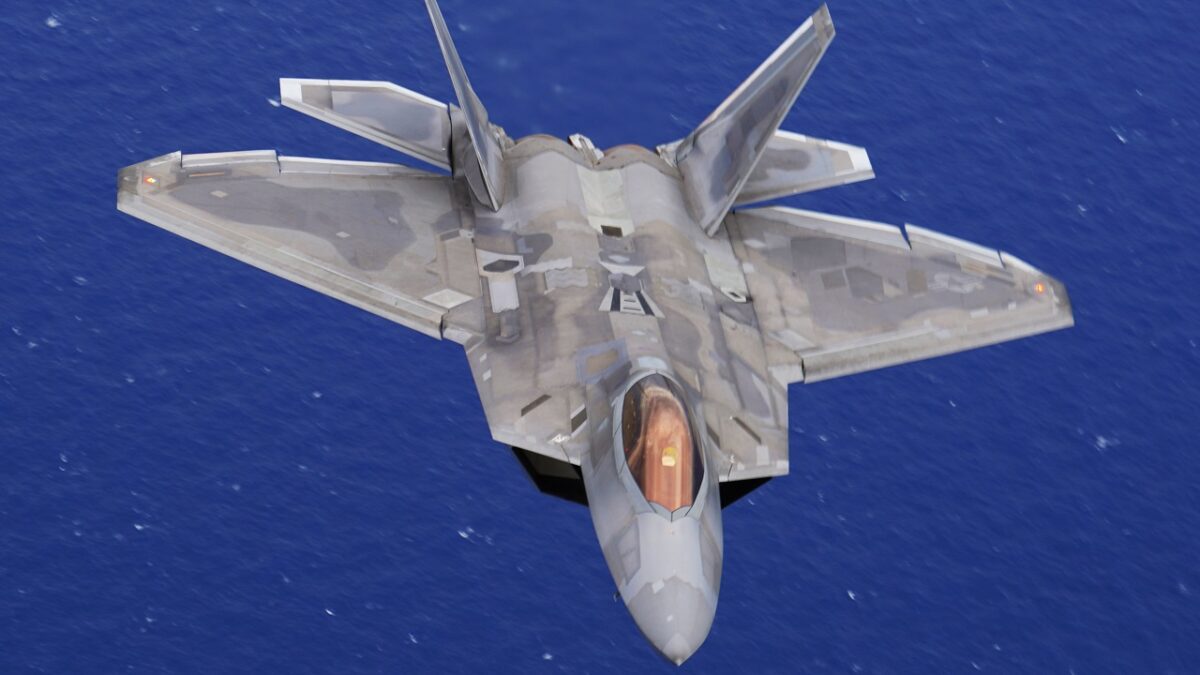
F-22 Hawaiian Raptor flies over Joint Base Pearl Harbor-Hickam, Hawaii, Dec. 5, 2019.
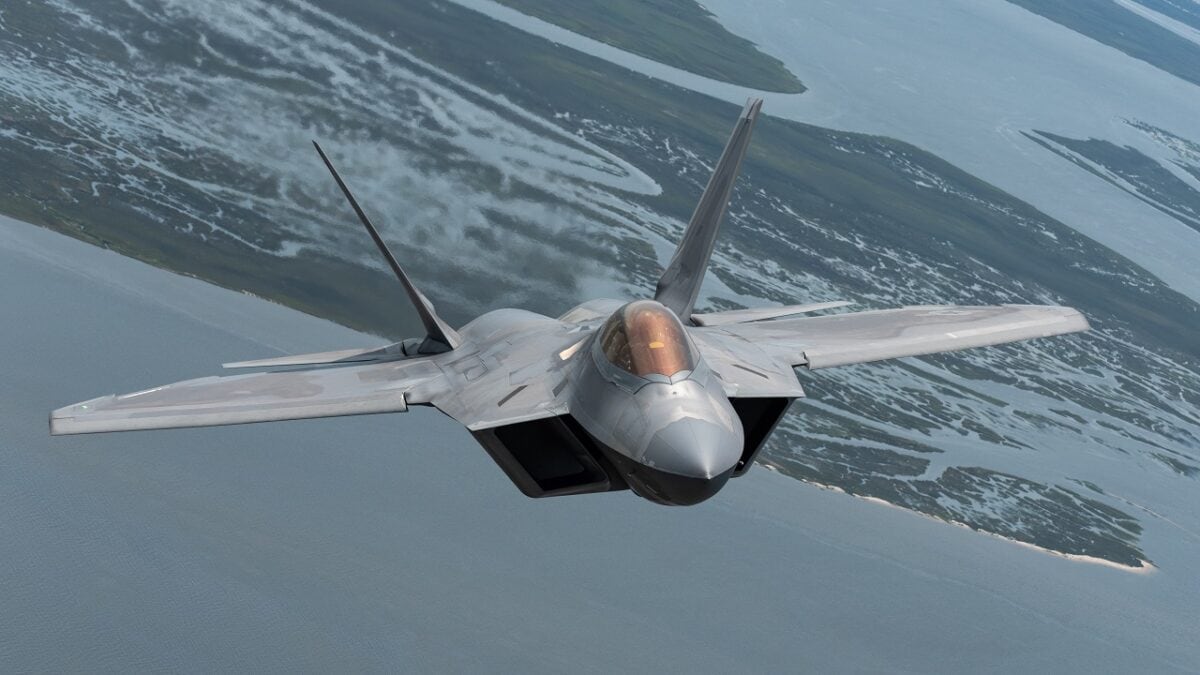
U.S. Air Force Maj. Paul ‘Loco’ Lopez, F-22 Demo Team commander/pilot, performs an aerial demonstration during the MCAS Beaufort air show, April 27, 2019. Maj. Lopez has over 1,500 hours flying both the F-15 and the F-22 and is in his second year as the commander of the F-22 Raptor Demonstration Team. (U.S. Air Force photo by 2nd Lt. Samuel Eckholm)
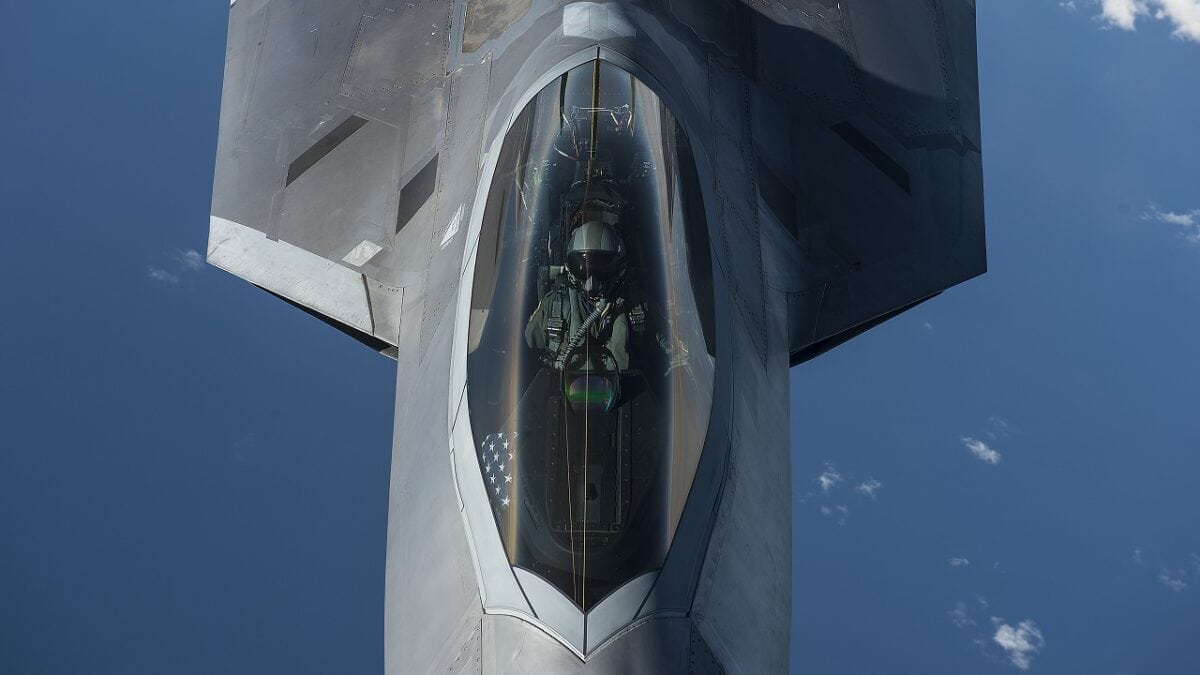
A U.S. Air Force F-22 Raptor pilot from the 95th Fighter Squadron, Tyndall Air Force Base, Fla., flies over the Baltic Sea Sept. 4, 2015. The U.S. Air Force has deployed four F-22 Raptors, one C-17 Globemaster III, approximately 60 Airmen and associated equipment to Spangdahlem Air Base, Germany. While these aircraft and Airmen are in Europe, they will conduct air training with other Europe-based aircraft. (U.S. Air Force photo by Tech. Sgt. Jason Robertson/Released)
Unlike the Nighthawk, the F-22 really was a stealth fighter, designed from the ground up to dominate the skies against advanced Soviet fighters like the Su-35 and eventual Su-57. Despite being the oldest aircraft of its generation, the F-22 is still widely considered to be the most capable air superiority fighter anywhere on the planet, more than two decades since it first took flight.
2010: Lockheed Martin’s F-35B becomes the first aircraft to ever break the sound barrier and then execute a vertical landing
The F-35’s data-fusing capabilities provide better situational awareness than any tactical aircraft in history, literally improving the performance of older aircraft just by flying alongside them. But most people don’t realize it’s not just computing power and stealth that makes the F-35 so special (and expensive). In a very real way, the F-35 was designed to do things many weren’t sure a fighter could even do.
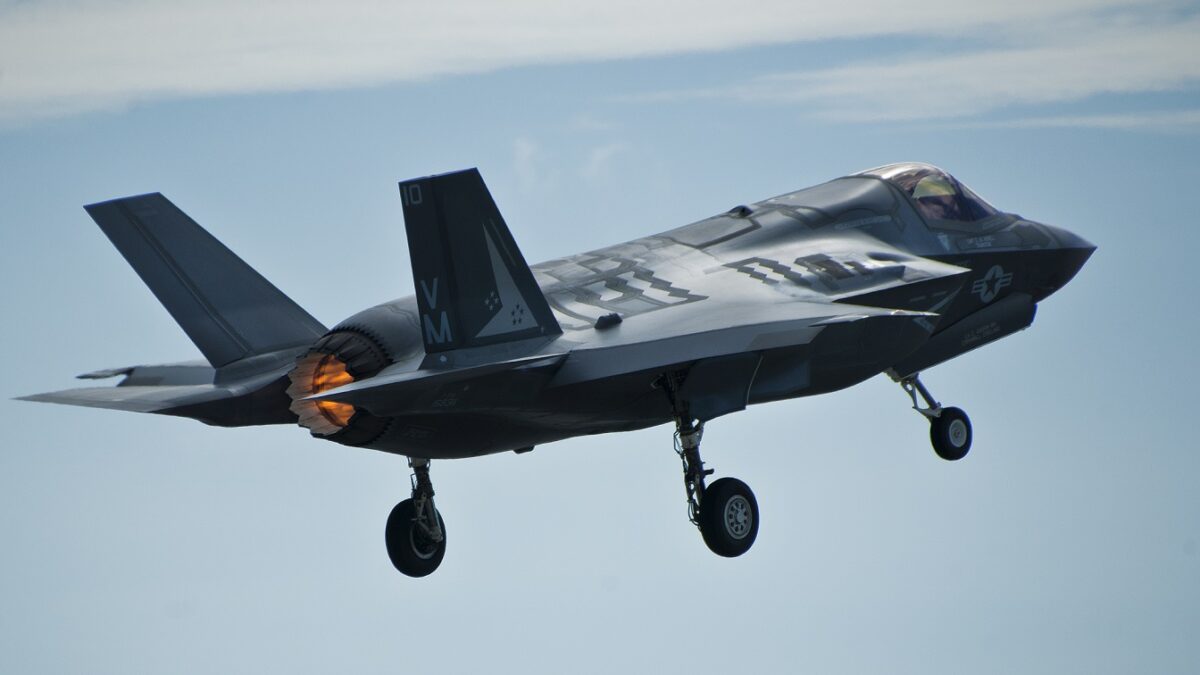
A Marine F-35B Lightning II takes off from the Eglin Air Force Base runway for a local sortie. The 33rd Fighter Wing’s integrated training center for the joint strike fighter hosts squadrons for Air Force, Navy, Marines and partner nations. (U.S. Air Force photo/Samuel King Jr.)
On March 18, 2010, an F-35B did just that over Naval Air Station in Patuxent River, Maryland. While subsonic jump jets like the AV-8B Harrier had long been executing vertical landings, none had ever been able to manage that and fly at supersonic speeds. The F-35B, designed primarily for the US Marine Corps, became the first aircraft to do so in history with test pilot Graham Tomlinson at the stick.
Alex Hollings is a writer, dad, and Marine veteran who specializes in foreign policy and defense technology analysis. He holds a master’s degree in Communications from Southern New Hampshire University, as well as a bachelor’s degree in Corporate and Organizational Communications from Framingham State University.

